Tweezing, a widely accepted method of hair removal, has been practiced for centuries. Its popularity stems from its convenience, cost-effectiveness, and the precision it provides in eliminating unwanted hair. Despite its many benefits, the potential risks associated with this seemingly harmless routine are often overlooked. This blog post aims to shine a light on the less commonly known hazards that can accompany tweezing. By making individuals aware of these risks, they can make more informed decisions about their personal grooming routines and take necessary precautions to mitigate any adverse effects.
Potential Scarring
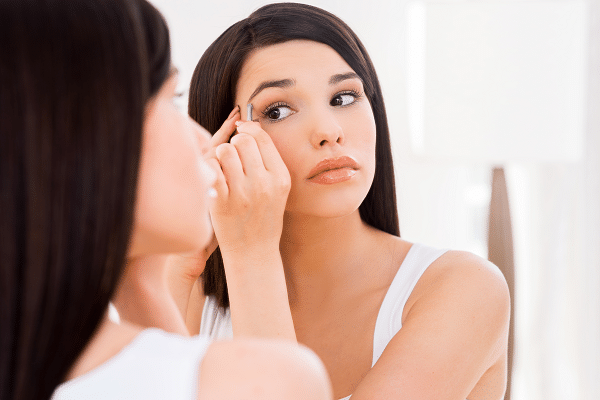
Engaging in improper tweezing techniques can cause unintended skin damage, which may lead to scarring. This damage typically occurs when hair is yanked out forcibly, causing trauma to the surrounding skin tissue. Repeated trauma can cause the skin to become irritated and inflamed, eventually leading to the formation of scar tissue. Scars may be temporary or permanent, depending on the severity of the damage and the individual’s skin type.
Professional guidance can play a significant role in reducing the likelihood of scarring. It’s important to remember that the skin, particularly on the face, is delicate and requires careful handling. Consultation with a dermatologist or a trained aesthetician can provide valuable insights into the correct tweezing methods, which can prevent skin damage and potential scarring.
Infection Risks

Unsterilized tweezers pose a significant risk of bacterial infections. Each time a hair is pulled from its follicle, a tiny wound is created, providing a perfect entry point for bacteria. If the tweezers used in the process are not properly cleaned and sanitized, they can introduce harmful bacteria into these open follicles, resulting in infection.
Tweezing can also lead to an inflammatory condition known as folliculitis, where hair follicles become inflamed due to bacterial or fungal infection. This condition presents as small red bumps or white-headed pimples around hair follicles and can cause discomfort and itching. In severe cases, folliculitis can cause permanent hair loss or scarring. To prevent these outcomes, it’s crucial to always use sterilized tweezers and ensure good personal hygiene when tweezing.
Hyperpigmentation
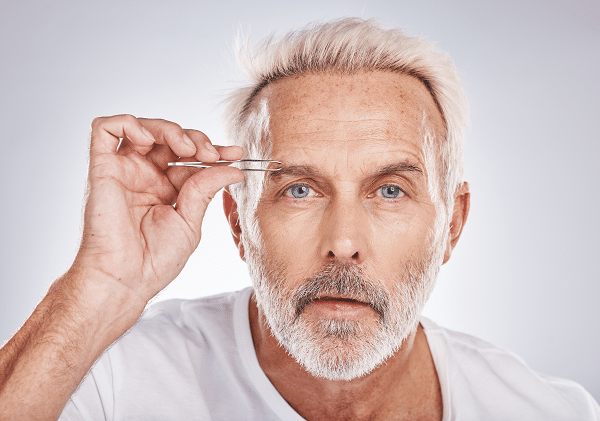
Tweezing can lead to a skin condition called post-inflammatory hyperpigmentation. This occurs when skin trauma, like that caused by improper tweezing, leads to an overproduction of melanin, the pigment responsible for skin color. This can result in darker spots or patches appearing on the skin where the tweezing has taken place. The likelihood of hyperpigmentation varies depending on factors like skin type and the level of trauma caused.
To manage and prevent this condition, care must be taken during the tweezing process to minimize skin trauma. Gentle handling of skin, along with the use of soothing, post-tweezing skincare products, can help. Additionally, a dermatologist may recommend specific treatments or creams designed to reduce hyperpigmentation and even out skin tone.
Ingrown Hairs
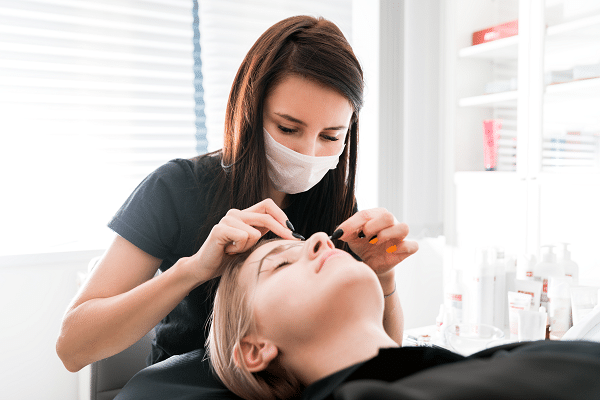
Improper tweezing can lead to the formation of ingrown hairs, a condition where hairs grow back into the skin instead of rising up from it. This usually happens when a hair is broken off below the skin surface during tweezing. The new growth can become trapped under the skin, resulting in a raised, red bump that can cause discomfort and look unsightly.
Ingrown hairs can lead to complications such as infection, darkened skin, and scarring. It’s important to use the correct technique when tweezing to prevent hair breakage. If ingrown hairs are already present, treatments are available, including topical creams and, in some cases, medical procedures.
Possible Skin Elasticity Loss
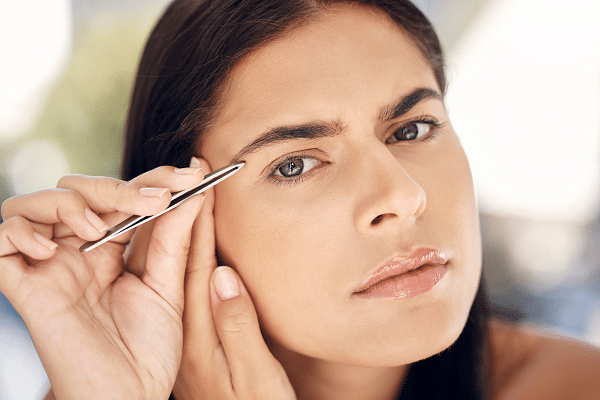
Repeated tweezing might affect skin elasticity over time. Skin elasticity refers to the skin’s ability to return to its normal state after being stretched or compressed. When tweezing is performed frequently and forcefully, it may lead to the stretching of the skin, and over time, this can contribute to reduced elasticity, leading to sagging skin and premature aging.
The link between skin elasticity loss and tweezing, though not often discussed, is something that should be considered. To avoid this, one should aim for moderate and careful tweezing. Furthermore, adopting a skincare routine that supports skin elasticity, such as using products with ingredients like retinol and vitamin C, can be beneficial.
Allergic Reactions
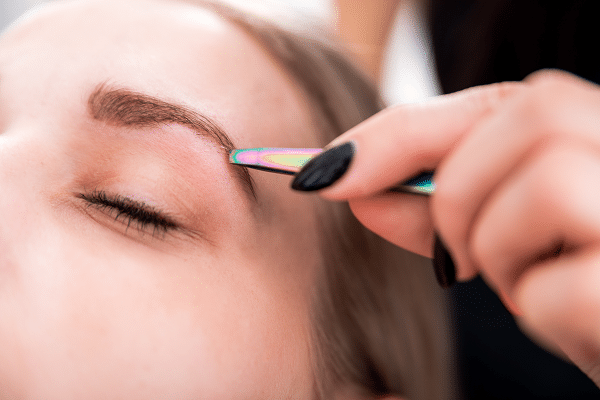
Tweezers are commonly made of metal alloys, which can cause allergic reactions in some people. Symptoms might include redness, itchiness, swelling, or a rash at the site of tweezing. Some people might also experience more systemic reactions such as dizziness or difficulty breathing, although this is rare. It’s crucial to monitor for these symptoms and seek medical help if they occur.
One way to mitigate this risk is by using tweezers made from hypoallergenic materials or materials you know you are not allergic to. It is also recommended to perform a patch test before using a new pair of tweezers for the first time. This involves using the tweezers on a small patch of skin and waiting to see if any reactions occur.
Pain And Discomfort
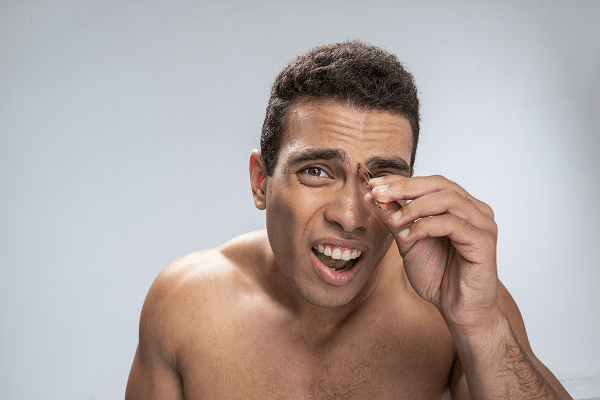
Tweezing can cause considerable pain and discomfort, particularly when removing hair from sensitive areas. This pain occurs because hair is being forcibly removed from the follicle, which is rich in nerve endings. Over time, this can cause the skin to become more sensitive, leading to increased pain with each subsequent tweezing session.
Strategies can be used to minimize the pain associated with tweezing. For instance, applying a warm compress before tweezing can help to open the pores and make hair removal easier. Using a numbing cream can also help to reduce discomfort. Additionally, it’s important to pull the hair out in the direction of its growth to minimize pain and prevent hair breakage.
Conclusion
Tweezing is an effective and popular hair removal method. However, it’s important to be aware of the less commonly known risks that come along with this technique, including scarring, infections, hyperpigmentation, ingrown hairs, loss of skin elasticity, allergic reactions, and pain. By understanding these risks, individuals can take appropriate precautions and make more informed decisions about their personal grooming routines. In addition, consultation with dermatologists or professional aestheticians can offer valuable insights and individualized guidance to ensure the maintenance of healthy and beautiful skin.


